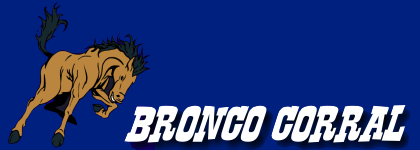There is a check engine light that functions starting in 88. It should come on when you are starting it as a lamp test and then go out. If it doesn't come on then the bulb may be burnt out. It is still possible to get codes without the lamp.
There are three different sets of codes that can be gotten.
The KOEO test (Key On Engine Off) codes are a series of self tests that can be triggered. These basically verify sensors are in range.
The CM (continuous memory) are codes stored in memory that may have been issued while operating.
The KOER test (Key On Engine Running) are some additional tests that build on the KOEO tests and verify items in running condition such as throttle position sensor range.
These things are far from perfect but if you are trying to make sure she is in good running condition uncover any sensor issues.
Just because a sensor is reported as bad doesn't necessarily mean it is that sensor. There may be wiring issues, may be operating issues that cause the bad reading (say a vacuum leak, bad spark, fuel injector). But codes are good place to start with the engine.
This should help you out
http://www.therangerstation.com/tech_library/OBD_I.shtml
If she been sitting a while, normal things like changing oil and coolant would be good. Making sure she gets up to temperature (thermostat isn't stuck open).
The PCV valve is often neglected. They are really cheap and easy to replace but often overlooked. They are very important system for reducing oil and crankcase contamination/junk. Also make sure hose going to PCV valve is drawing vacuum as that can get clogged.
I had some major top end work done right when I got my 87 BII about 2 years ago. I was shocked this spring when going thru verifying every sensor to figure out an emissions issue, that with all the work the shop did (which included pulling the valve covers) that they put the old PCV valve on. The rubber around it was in bad shape, the valve was completely jammed and wasn't doing a thing. I wasn't happy about that. My bad for not looking but I've learned lots in the past couple years and I really wasn't aware of the importance till more recently.
Just thinking thru issues I've had. Even the newest BIIs are approaching 25 years so there are lots of things one is liable to encounter that aren't so common in newer vehicles.
Again with the fluids, getting all new brake fluid probably be good. Differential oil checked if not changed.
I had a problem with one of the rubber brake lines (in the front) collapsing. The rubber has multiple layers of rubber. Externally they may look fine but an inner layer collapses. It can block braking or like in my case, act like a check valve so when you press the brake fluid goes in but doesn't come out (or does so slowly). That was causing one brake to drag and on longer trips the brake rotor would get very hot. It eventually toasted my bearing grease. As the whole thing would get hot I would feel vibration. Never exhibited that when local cause it never warmed up enough.
I had issues with tie-rod ends going back causing steering issues. If steering feels fine you are probably okay but if it feels lose check things out.
Check out the front driveline. Those don't get much use and the u-joints if they never been replaced are pretty old.
It looks like you have auto locking hubs so you can't just lock the hubs and leave in 2WD and see if it generates any vibration in road driving. That is the easiest way to check out front driveline, if it is smooth even into high speeds (full highway speeds) with only a little increase in noise (more rotating) your u-joints bearings and such are good. Any significant vibration grinding or pinging sounds deserve investigation.
Since you can't do that, you can check for looseness underneath and while in 2WD seeing how well each of the shafts turn. Front driveshaft and the left and right axle shafts.
The front shaft yoke into the transfer case may be a bit loose but it seems to tolerate that. I found a u-joint in drive shaft because pushing up and pulling down the amount of looseness changed. It was binding during part of the rotation.
The front drive shaft u-joints are easy to replace. The axle shafts are a pain and two are best done by pulling off the spindles (more of a pain). There are three axle shat u-joints. One on the driver side and two on the passenger side. The inner one on passenger side (closest to the differential) is a royal pain. It is the one I still have to do. There is a c clip in the diff to pull the shaft out of the diff and since front diff cover is the TTB itself it means dropping the front diff. I've heard of people changing that u-joint in place using a ball joint press so I been thinking of that.
And if you ever pull the passenger side spindle off and pull out that axle shaft make sure you pay attention to the phasing putting it back in. The shop I paid to replace the front u-joints didn't do that so I ended up having to take it apart myself to fix it. They insisted phasing didn't make a difference...it does.
That is what everyone seems to do!!!
I just stick to roads and want one of those CV shafts. I don't like the u-joint shaft I have now. It is a small issue, some vibration under heavy accel in first gear mostly, some second. I miss the really smooth action of the original CV shaft.


